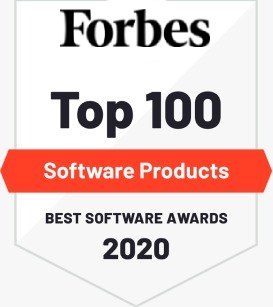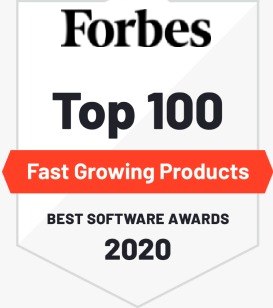Section 1 : Getting Started
|
|
Lecture 1 | INTRODUCTION TO BRAINMEASURES PROCTOR SYSTEM | |
|
|
Lecture 2 | What Is Docker_ | 00:04:42 Duration |
|
|
Lecture 3 | Why Docker & Containers_ | 00:05:59 Duration |
|
|
Lecture 4 | About Proctor Testing | |
|
|
Lecture 5 | Virtual Machines vs Docker Containers | 00:08:55 Duration |
|
|
Lecture 6 | Docker Setup - Overview | 00:04:31 Duration |
|
|
Lecture 7 | About Certification | |
|
|
Lecture 8 | Docker Setup - Windows | |
|
|
Lecture 9 | Docker Setup - Docker Toolbox for Older Systems | 00:06:51 Duration |
|
|
Lecture 10 | Docker Playground | |
|
|
Lecture 11 | An Overview of the Docker Tools | 00:03:04 Duration |
|
|
Lecture 12 | Installing & Configuring an IDE | 00:02:06 Duration |
|
|
Lecture 13 | Getting Our Hands Dirty_ | 00:09:22 Duration |
|
|
Lecture 14 | Course Outline | 00:04:14 Duration |
|
|
Lecture 15 | How To Get The Most Out Of This Course | 00:03:24 Duration |
|
|
Lecture 16 | Course Resources |
Section 2 : Docker Images & Containers_ The Core Building Blocks
Section 3 : Managing Data & Working with Volumes
Section 4 : Networking_ (Cross-)Container Communication
|
|
Lecture 1 | Module Introduction | 00:01:16 Duration |
|
|
Lecture 2 | Case 1_ Container to WWW Communication | 00:03:49 Duration |
|
|
Lecture 3 | Case 2_ Container to Local Host Machine Communication | 00:02:13 Duration |
|
|
Lecture 4 | Case 3_ Container to Container Communication | 00:02:40 Duration |
|
|
Lecture 5 | Analyzing the Demo App | 00:07:49 Duration |
|
|
Lecture 6 | Creating a Container & Communicating to the Web (WWW) | 00:06:45 Duration |
|
|
Lecture 7 | Making Container to Host Communication Work | 00:04:37 Duration |
|
|
Lecture 8 | Container to Container Communication_ A Basic Solution | 00:07:06 Duration |
|
|
Lecture 9 | Introducing Docker Networks_ Elegant Container to Container Communication | 00:10:00 Duration |
|
|
Lecture 10 | How Docker Resolves IP Addresses | 00:02:22 Duration |
|
|
Lecture 11 | Docker Network Drivers | |
|
|
Lecture 12 | Module Summary | 00:01:26 Duration |
|
|
Lecture 13 | Module Resources |
Section 5 : Building Multi-Container Applications with Docker
|
|
Lecture 1 | Module Introduction | 00:02:08 Duration |
|
|
Lecture 2 | Our Target App & Setup | 00:10:48 Duration |
|
|
Lecture 3 | Dockerizing the MongoDB Service | 00:04:26 Duration |
|
|
Lecture 4 | Dockerizing the Node App | 00:07:30 Duration |
|
|
Lecture 5 | Moving the React SPA into a Container | 00:08:26 Duration |
|
|
Lecture 6 | Adding Docker Networks for Efficient Cross-Container Communication | 00:11:50 Duration |
|
|
Lecture 7 | Adding Data Persistence to MongoDB with Volumes | 00:08:16 Duration |
|
|
Lecture 8 | Volumes, Bind Mounts & Polishing for the NodeJS Container | 00:15:02 Duration |
|
|
Lecture 9 | Live Source Code Updates for the React Container (with Bind Mounts) | 00:06:50 Duration |
|
|
Lecture 10 | Module Summary | 00:04:43 Duration |
|
|
Lecture 11 | Module Resources |
Section 6 : Docker Compose_ Elegant Multi-Container Orchestration
|
|
Lecture 1 | Module Introduction | 00:03:08 Duration |
|
|
Lecture 2 | Docker-Compose_ What & Why_ | 00:04:33 Duration |
|
|
Lecture 3 | Creating a Compose File | 00:06:16 Duration |
|
|
Lecture 4 | Diving into the Compose File Configuration | 00:11:20 Duration |
|
|
Lecture 5 | Installing Docker Compose on Linux | |
|
|
Lecture 6 | Docker Compose Up & Down | 00:03:46 Duration |
|
|
Lecture 7 | Working with Multiple Containers | 00:14:51 Duration |
|
|
Lecture 8 | Adding Another Container | 00:05:54 Duration |
|
|
Lecture 9 | Building Images & Understanding Container Names | 00:05:25 Duration |
|
|
Lecture 10 | Module Summary | 00:02:29 Duration |
|
|
Lecture 11 | Module Resources |
Section 7 : Working with _Utility Containers_ & Executing Commands In Containers
|
|
Lecture 1 | Module Introduction & What are _Utility Containers__ | 00:02:39 Duration |
|
|
Lecture 2 | Utility Containers_ Why would you use them_ | 00:03:02 Duration |
|
|
Lecture 3 | Different Ways of Running Commands in Containers | 00:05:56 Duration |
|
|
Lecture 4 | Building a First Utility Container | 00:04:51 Duration |
|
|
Lecture 5 | Utilizing ENTRYPOINT | 00:05:27 Duration |
|
|
Lecture 6 | Using Docker Compose | 00:06:09 Duration |
|
|
Lecture 7 | About Proctor Testing | |
|
|
Lecture 8 | Module Summary | 00:01:31 Duration |
|
|
Lecture 9 | Module Resources |
Section 8 : A More Complex Setup_ A Laravel & PHP Dockerized Project
|
|
Lecture 1 | Module Introduction | 00:02:29 Duration |
|
|
Lecture 2 | The Target Setup | 00:07:13 Duration |
|
|
Lecture 3 | Adding a Nginx (Web Server) Container | 00:08:08 Duration |
|
|
Lecture 4 | Adding a PHP Container | 00:10:43 Duration |
|
|
Lecture 5 | Adding a MySQL Container | 00:03:21 Duration |
|
|
Lecture 6 | Adding a Composer Utility Container | 00:03:59 Duration |
|
|
Lecture 7 | Creating a Laravel App via the Composer Utility Container | 00:03:35 Duration |
|
|
Lecture 8 | Fixing Errors With The Next Lecture | |
|
|
Lecture 9 | Launching Only Some Docker Compose Services | 00:11:54 Duration |
|
|
Lecture 10 | Adding More Utility Containers | 00:06:24 Duration |
|
|
Lecture 11 | Docker Compose with and without Dockerfiles | 00:04:07 Duration |
|
|
Lecture 12 | Bind Mounts and COPY_ When To Use What | 00:14:20 Duration |
|
|
Lecture 13 | Module Resources |
Section 9 : Deploying Docker Containers
Section 10 : Docker & Containers - A Summary
|
|
Lecture 1 | Module Introduction | 00:00:57 Duration |
|
|
Lecture 2 | Images & Containers | 00:03:35 Duration |
|
|
Lecture 3 | Key Commands | 00:02:14 Duration |
|
|
Lecture 4 | Data, Volumes & Networking | 00:03:13 Duration |
|
|
Lecture 5 | Docker Compose | 00:01:11 Duration |
|
|
Lecture 6 | Local vs Remote | 00:02:38 Duration |
|
|
Lecture 7 | Deployment | 00:04:27 Duration |
|
|
Lecture 8 | Module Resources |
Section 11 : Getting Started with Kubernetes
|
|
Lecture 1 | Module Introduction | 00:02:16 Duration |
|
|
Lecture 2 | More Problems with Manual Deployment | 00:07:41 Duration |
|
|
Lecture 3 | Why Kubernetes_ | 00:05:12 Duration |
|
|
Lecture 4 | What Is Kubernetes Exactly_ | 00:06:54 Duration |
|
|
Lecture 5 | Kubernetes_ Architecture & Core Concepts | 00:07:37 Duration |
|
|
Lecture 6 | Kubernetes will NOT manage your Infrastructure_ | 00:03:49 Duration |
|
|
Lecture 7 | A Closer Look at the Worker Nodes | 00:04:21 Duration |
|
|
Lecture 8 | A Closer Look at the Master Node | 00:02:48 Duration |
|
|
Lecture 9 | Important Terms & Concepts | 00:03:08 Duration |
|
|
Lecture 10 | Module Resources |
Section 12 : Kubernetes in Action - Diving into the Core Concepts
Section 13 : Managing Data & Volumes with Kubernetes
Section 14 : Kubernetes Networking
|
|
Lecture 1 | Module Introduction | 00:01:21 Duration |
|
|
Lecture 2 | Starting Project & Our Goal | 00:06:09 Duration |
|
|
Lecture 3 | Creating a First Deployment | 00:06:57 Duration |
|
|
Lecture 4 | Another Look at Services | 00:09:38 Duration |
|
|
Lecture 5 | Multiple Containers in One Pod | 00:08:32 Duration |
|
|
Lecture 6 | Pod-internal Communication | 00:04:29 Duration |
|
|
Lecture 7 | Creating Multiple Deployments | 00:05:54 Duration |
|
|
Lecture 8 | Pod-to-Pod Communication with IP Addresses & Environment Variables | 00:07:27 Duration |
|
|
Lecture 9 | Using DNS for Pod-to-Pod Communication | 00:05:21 Duration |
|
|
Lecture 10 | Which Approach Is Best_ And a Challenge_ | 00:03:09 Duration |
|
|
Lecture 11 | Challenge Solution | 00:10:06 Duration |
|
|
Lecture 12 | Adding a Containerized Frontend | 00:14:07 Duration |
|
|
Lecture 13 | Deploying the Frontend with Kubernetes | 00:07:52 Duration |
|
|
Lecture 14 | Using a Reverse Proxy for the Frontend | 00:13:57 Duration |
|
|
Lecture 15 | Module Summary | 00:01:52 Duration |
|
|
Lecture 16 | Module Resources |
Section 15 : Kubernetes - Deployment (AWS EKS)
|
|
Lecture 1 | Module Introduction | 00:01:49 Duration |
|
|
Lecture 2 | Deployment Options & Steps | 00:05:42 Duration |
|
|
Lecture 3 | AWS EKS vs AWS ECS | 00:02:49 Duration |
|
|
Lecture 4 | Preparing the Starting Project | |
|
|
Lecture 5 | A Note on AWS EKS Pricing | |
|
|
Lecture 6 | Diving Into AWS | 00:03:05 Duration |
|
|
Lecture 7 | Creating & Configuring the Kubernetes Cluster with EKS | 00:15:44 Duration |
|
|
Lecture 8 | Adding Worker Nodes | 00:08:48 Duration |
|
|
Lecture 9 | Applying Our Kubernetes Config | 00:07:56 Duration |
|
|
Lecture 10 | Getting Started with Volumes | 00:04:59 Duration |
|
|
Lecture 11 | Adding EFS as a Volume (with the CSI Volume Type) | 00:04:33 Duration |
|
|
Lecture 12 | Creating a Persistent Volume for EFS | 00:08:23 Duration |
|
|
Lecture 13 | Using the EFS Volume | 00:08:08 Duration |
|
|
Lecture 14 | A Challenge_ | |
|
|
Lecture 15 | Challenge Solution | 00:14:47 Duration |
|
|
Lecture 16 | Module Resources |
Section 16 : Roundup & Next Steps
|
|
Lecture 1 | You Learned A Lot_ | 00:03:23 Duration |
|
|
Lecture 2 | Related Topics You Could Explore | 00:07:08 Duration |
|
|
Lecture 3 | Next Steps_ | 00:03:06 Duration |


